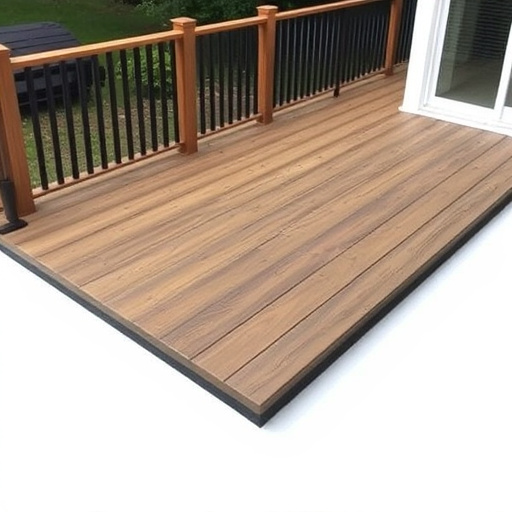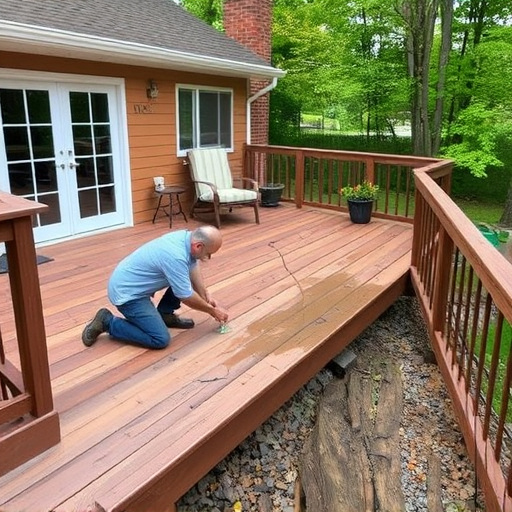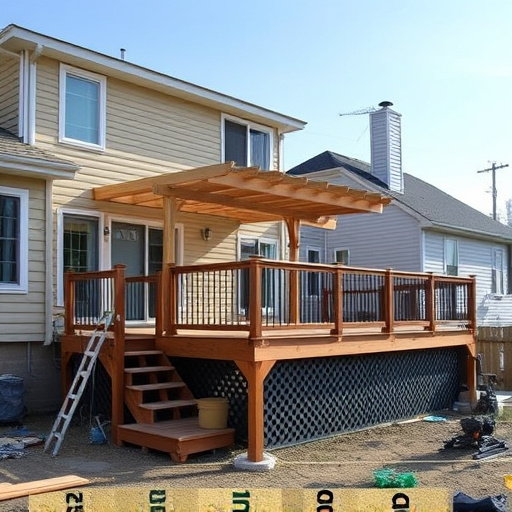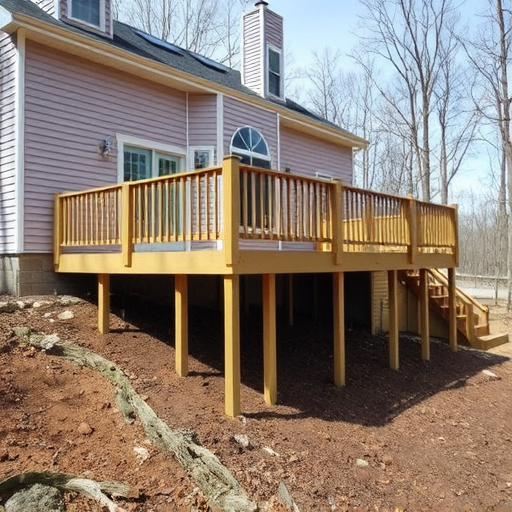Before maintaining your deck, assess its condition: severe wear may need sanding for preparation, moderate conditions benefit from staining, and extensive damage requires structural repairs. Sanding removes damaged fibers for a smooth base, enhancing color vibrancy. Choose between staining (color variety, moderate protection) or resealing (durability, weather resistance) based on wood condition and desired outcome; reseal every 2-3 years for optimal deck maintenance.
Keeping your deck in top condition is essential for any outdoor space. But when do you sand, stain, or reseal? This guide helps with that. Understanding your deck’s current state is key; inspecting for wear and tear will determine the best course of action. Sanding smoothes rough surfaces, but timing is crucial. Staining adds color and protection, while resealing provides a shield against moisture. By following these steps, you’ll ensure optimal deck maintenance and enhance its longevity.
- Understanding Deck Surface Conditions
- When to Sand for Optimal Finish
- Choosing Between Staining and Resealing
Understanding Deck Surface Conditions

Before deciding on sand, stain, or reseal your deck, it’s crucial to understand its current condition. Regular deck maintenance involves evaluating factors like weathering, dirt buildup, and existing stains. A deck that shows signs of severe wear, such as deep cracks, peeling paint, or significant color fading, might require sanding as the first step in its rejuvenation. Sanding not only removes loose material but also prepares the surface for new treatments.
On the other hand, if your deck is generally in good condition but needs a fresh look or better protection against elements, staining could be the ideal choice. Staining enhances the wood’s natural beauty while offering various color options and UV protection. Conversely, if your deck has reached the end of its useful life and shows extensive damage, resealing might not be enough; it may require replacing with commercial siding or undergoing significant exterior home improvements, including a roof consulting session to ensure structural integrity.
When to Sand for Optimal Finish
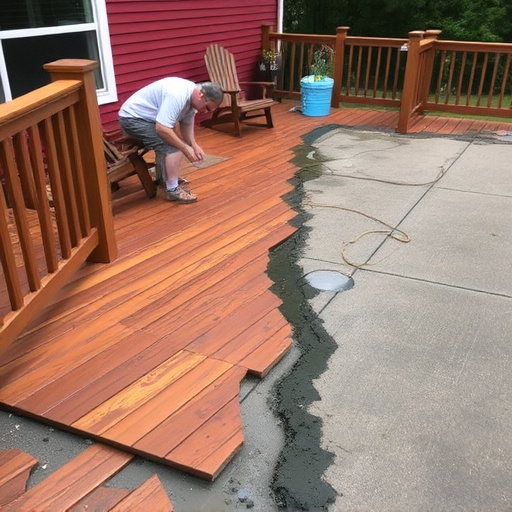
When deciding whether to sand your deck surface as part of your regular maintenance routine, consider the current condition of the wood. If you notice any rough spots, splinters, or an uneven finish, sanding is a crucial step before applying new stain or sealant. Regular sanding helps remove loose or damaged wood fibers, ensuring an even and smooth base for your chosen finish. This process is particularly important if your deck has seen better days, with visible wear and tear, cracks, or peeling paint—a common issue in commercial siding repair scenarios.
Optimal sanding prepares the deck by opening up the wood’s pores, allowing new stain to penetrate deeper, providing a more vibrant and long-lasting color. It also ensures that any existing sealant or stain is buffed away evenly, preventing patchy results. For best practices in deck maintenance, aim for a moderate grit sandpaper to achieve a seamless transition between sanding and staining or resealing your deck surface.
Choosing Between Staining and Resealing
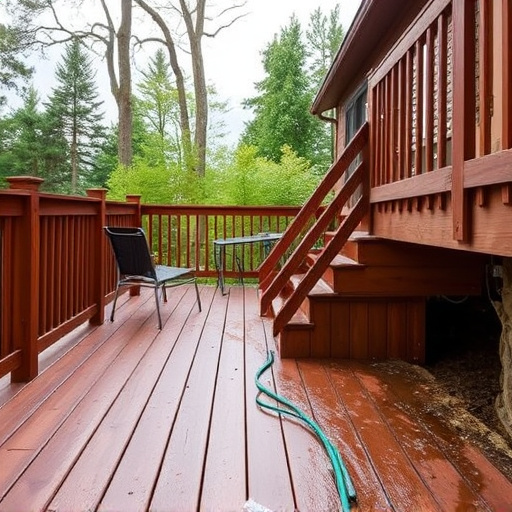
When deciding between staining and resealing your deck, consider its current condition and your desired outcome. Staining is an excellent option if you want to enhance the wood grain and add a range of colours while also providing some protection against water damage. It’s a cost-effective deck maintenance solution suitable for moderately weathered decks. On the other hand, resealing is ideal for severely worn or damaged surfaces as it creates a protective barrier, shielding the wood from elements like UV rays, moisture, and extreme temperatures, which can cause further deterioration. Regular sealing every 2-3 years ensures your deck stays in top condition.
Professional siding installation often recommends resealing as part of their roofing solutions for long-lasting protection. However, staining offers a more aesthetic appeal, making it popular among homeowners looking to revive the look of their decks without compromising on style. Choosing between the two depends on whether you prioritize durability and weather resistance or visual appeal and colouring options.
Regular deck maintenance is key to preserving your outdoor space. By understanding the current state of your deck surface, you can decide whether to sand, stain, or reseal for the best long-lasting results. Sanding removes imperfections and prepares the wood for a fresh coat, while staining adds color and protection. Resealing creates a protective barrier against elements and UV rays. Depending on your deck’s condition and desired outcome, these techniques can be used individually or in combination to ensure a beautiful, durable finish that enhances your outdoor living areas.










